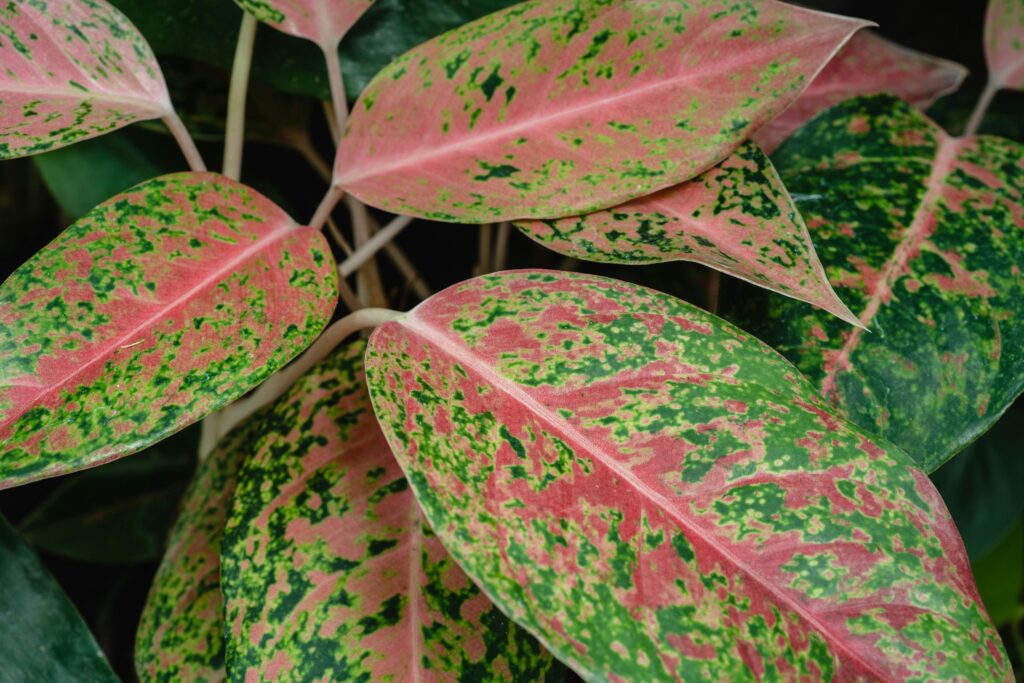The Ultimate Guide to Caring for Aglaonema Plants

We’re spotlighting one of the most beloved and versatile houseplants—the Aglaonema, commonly known as the Chinese Evergreen. Renowned for its stunning foliage and resilience, Aglaonemas are perfect for both novice plant parents and seasoned enthusiasts. Whether you’re looking to add a splash of color to your living space or seeking a low-maintenance plant that thrives in various conditions, the Aglaonema is an excellent choice. Here’s everything you need to know to keep your Aglaonema healthy and vibrant!
1. Lighting Needs
Aglaonemas are celebrated for their ability to thrive in low to medium light conditions, making them ideal for indoor environments with limited natural light. While they can tolerate low light, providing bright, indirect light will enhance their foliage colors and promote more vigorous growth.
- Ideal Placement: Near east or north-facing windows where they receive filtered light.
- Avoid: Direct sunlight, which can scorch their leaves, and overly dark corners that can stunt growth.
Tip: If your Aglaonema’s colors seem muted, consider moving it to a brighter spot to encourage more vibrant foliage.
2. Watering Routine
Maintaining the right watering schedule is crucial for the health of your Aglaonema. These plants prefer consistently moist soil but are also susceptible to root rot if overwatered.
- Watering Frequency: Water thoroughly when the top inch of soil feels dry to the touch, typically every 1-2 weeks.
- Method: Ensure excess water drains out of the pot to prevent waterlogging.
- Winter Care: Reduce watering frequency as the plant’s growth slows during the colder months.
Tip: Always check the moisture level before watering. Aglaonemas prefer slightly moist soil but dislike sitting in water.
3. Humidity and Temperature Requirements
Aglaonemas thrive in environments with moderate to high humidity and warm temperatures, mimicking their native tropical habitats.
- Optimal Humidity: 50-60%
- Temperature Range: 65-80°F (18-27°C)
- Avoid: Drafty areas, sudden temperature changes, and temperatures below 55°F (13°C), which can cause stress and leaf damage.
Tip: Increase humidity by using a humidifier, placing the plant on a pebble tray with water, or grouping it with other houseplants.
4. Ideal Soil Mix
A well-draining soil mix is essential to prevent root rot and ensure healthy growth. Aglaonemas prefer a loose, aerated medium that retains some moisture without becoming waterlogged.
- Recommended Mix: A combination of peat-based potting soil with added perlite or orchid bark for improved drainage.
- pH Level: Slightly acidic to neutral (pH 6.0-7.0)
Tip: Repot your Aglaonema every 2-3 years to refresh the soil and provide ample space for root growth.
5. Fertilizing Tips
Proper fertilization supports robust growth and vibrant foliage. However, over-fertilizing can lead to salt buildup and root damage.
- Fertilizer Type: Use a balanced, water-soluble fertilizer (e.g., 10-10-10) diluted to half strength.
- Fertilizing Schedule: Feed every 4-6 weeks during the spring and summer growing seasons.
- Fall and Winter: Reduce or discontinue fertilizing as the plant enters its dormant phase.
Tip: Flush the soil with water occasionally to remove any excess salts from fertilizers.
6. Pruning and Propagation
Maintaining your Aglaonema through pruning and propagation not only keeps it looking its best but also allows you to expand your plant collection.
- Pruning: Remove yellowing, damaged, or leggy leaves with clean, sharp scissors or pruning shears to encourage new growth and maintain a tidy appearance.
- Propagation: Aglaonemas can be propagated through stem cuttings or division.
- Stem Cuttings: Cut a healthy stem with a few leaves and place it in water or moist soil until roots develop.
- Division: Carefully separate a section of the plant with its own roots and plant it in a new pot.
Tip: Propagated plants should be kept in a warm, humid environment to encourage root development.
7. Common Varieties and Their Unique Care Needs
Aglaonema comes in a variety of stunning leaf patterns and colors. While general care applies to all, some varieties have specific needs to enhance their unique beauty.
- Aglaonema Silver Bay: Features striking silver leaves with green edges. Requires bright, indirect light to maintain its silvery sheen.
- Aglaonema Red Siam: Known for its deep red leaves, this variety thrives in lower light conditions, which help preserve its vibrant color.
- Aglaonema Maria Christina: Boasts large, variegated leaves with green and silver patterns. Prefers consistent moisture and higher humidity to showcase its variegation.
Tip: Research your specific Aglaonema variety to cater to its unique color and pattern needs, ensuring optimal growth and appearance.
8. Aglaonemas and Air Purification
Beyond their aesthetic appeal, Aglaonemas are excellent air purifiers. They effectively remove toxins such as formaldehyde and benzene from the air, making them a healthy addition to any indoor space.
Aglaonemas are a fantastic choice for adding lush, vibrant greenery to your home or office. Their adaptability and striking appearance make them a standout among houseplants. Whether you’re new to plant care or a seasoned enthusiast, these versatile beauties are sure to thrive with the right attention. For more plant care tips or to explore our diverse selection of Aglaonemas and other stunning plants, visit us at Artistic Foliage. We’re here to help you cultivate a beautiful and healthy indoor garden. Happy planting!
